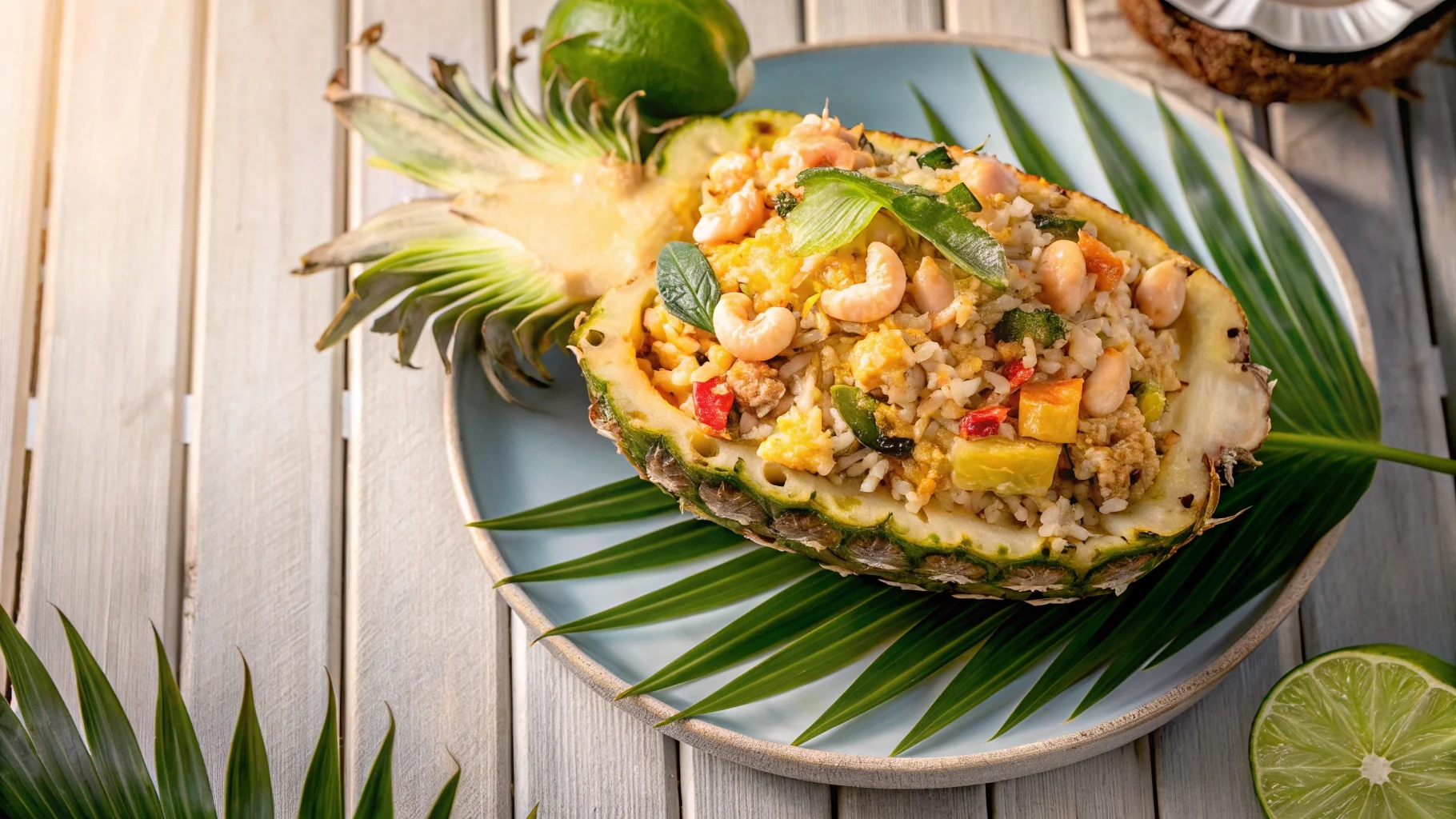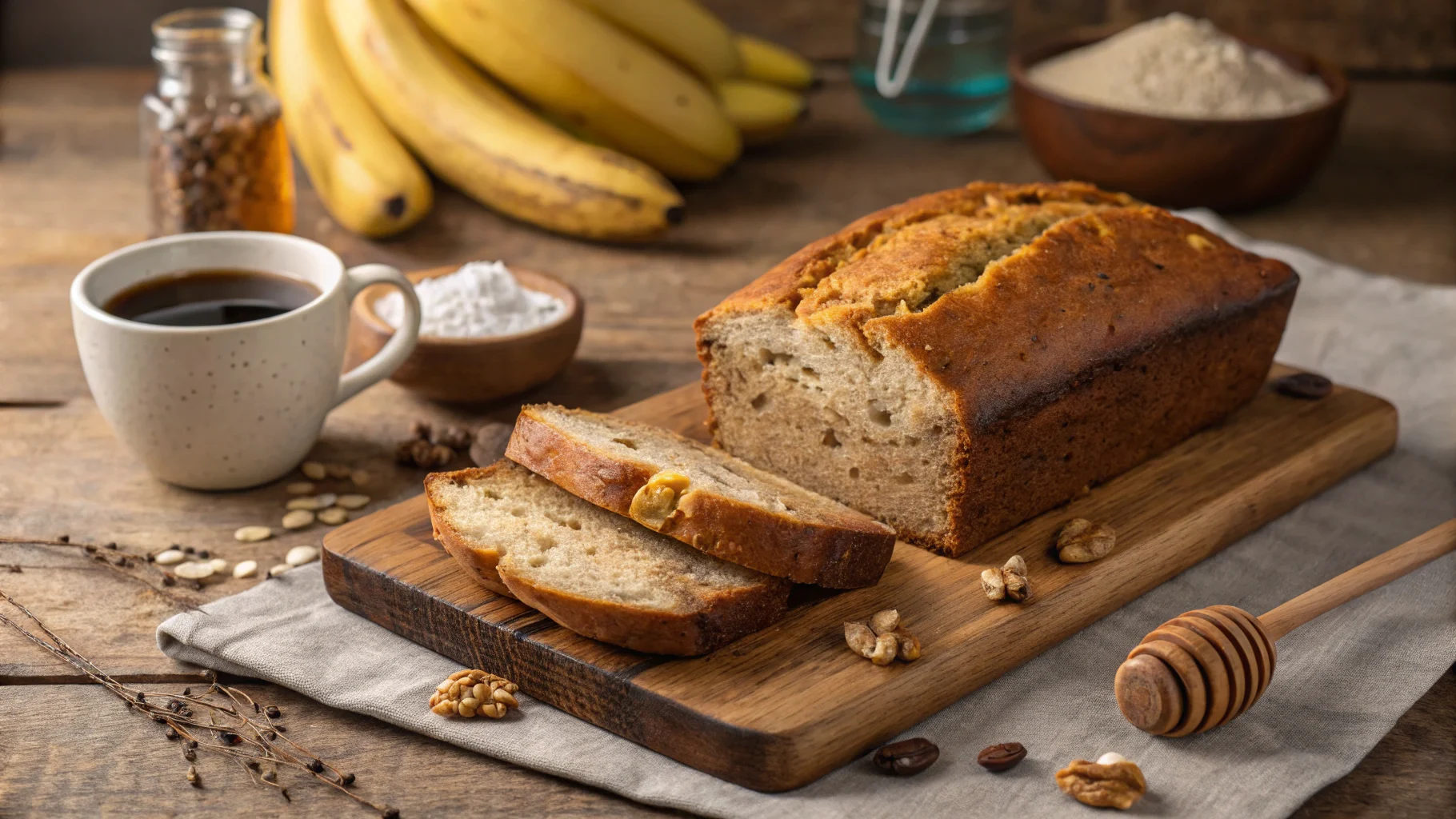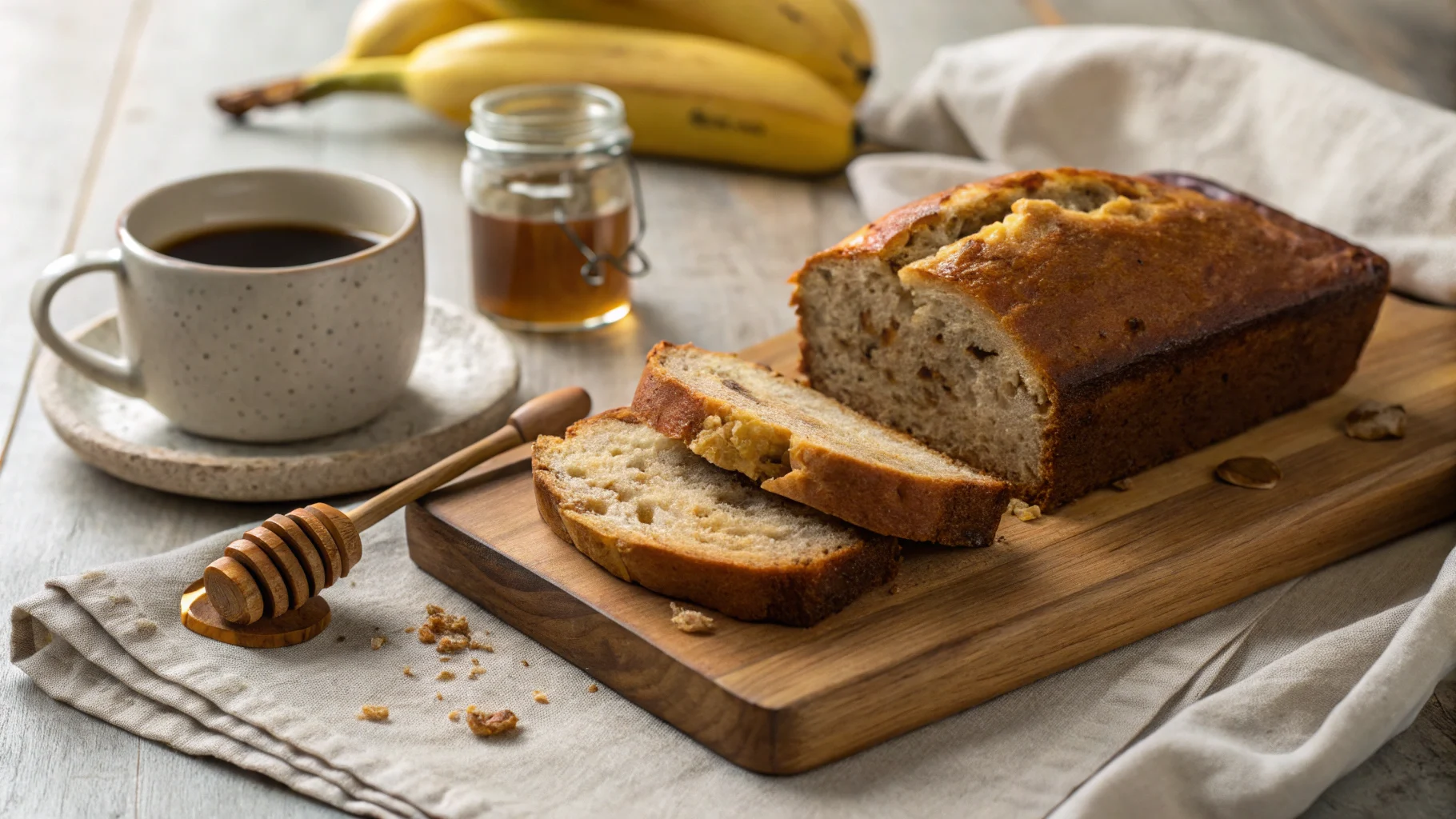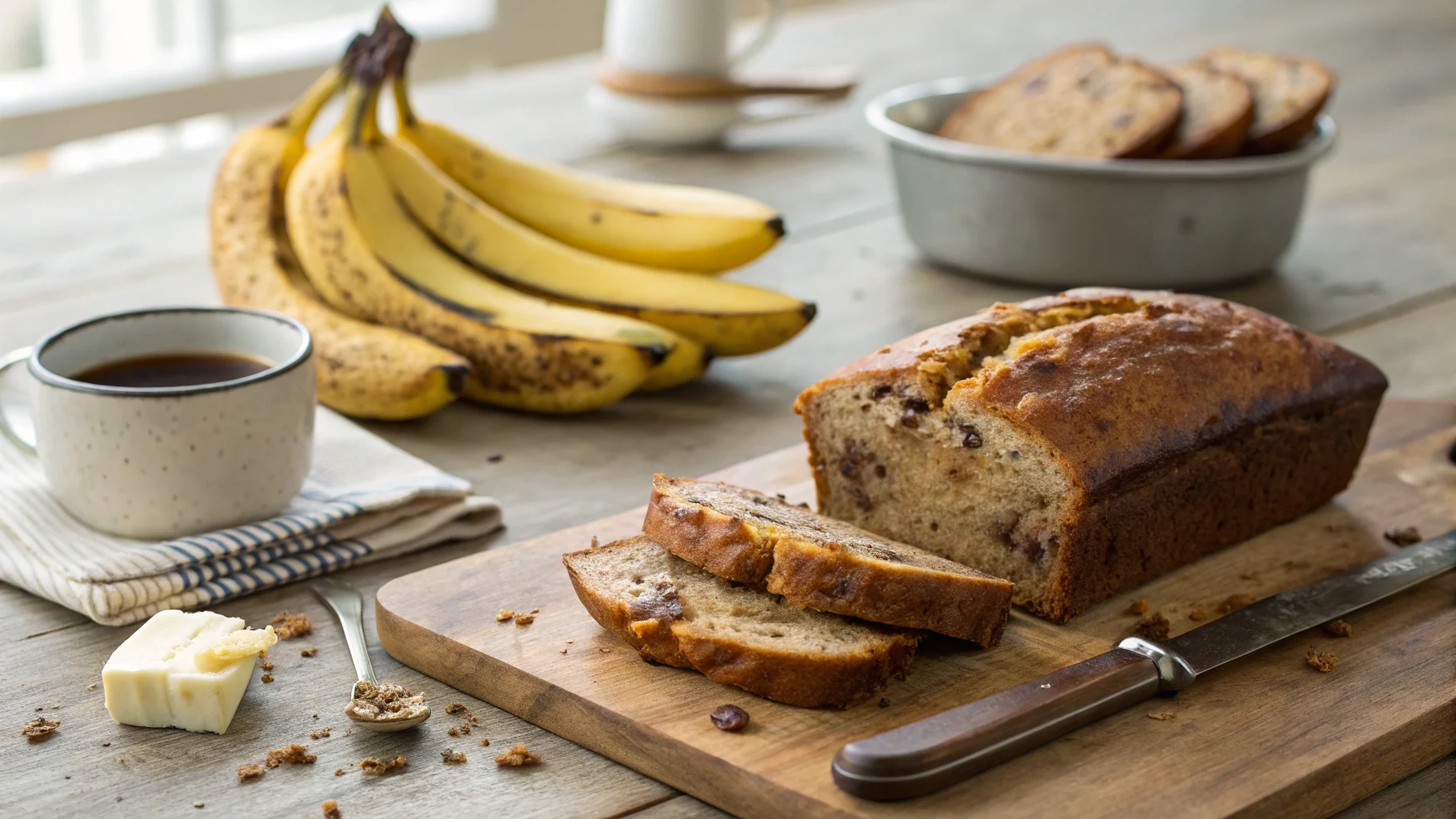Origins and Cultural Significance of Pineapple Fried Rice
Pineapple fried rice is more than just a dish—it’s a reflection of culture, history, and creativity. This section dives into its Thai roots, global variations, and its role in celebrations, providing a deeper understanding of how this vibrant recipe came to be.
Historical Background
Pineapple fried rice, or Khao Pad Sapparod in Thai, deeply reflects Thailand’s culinary traditions. Notably, Thai royalty likely enjoyed this dish, as it blends sweet and savory flavors—a signature of Thai cuisine. Moreover, Thai cooks often used pineapple, abundant in the tropical climate, to balance flavors and add a unique twist to their dishes.
In the early days, this recipe primarily served as a way to use leftover rice, a staple in Thai households. Over time, however, it gained popularity because of its unique pairing of sweet pineapple with savory rice. Furthermore, Thai cuisine often emphasizes a balance of five flavors—sweet, sour, salty, bitter, and spicy—and pineapple fried rice beautifully encapsulates this philosophy.
Eventually, the dish spread internationally due to the growing fascination with Thai food, particularly during the rise of Thai restaurants worldwide in the 20th century. Today, it’s not just a Thai specialty; instead, it has become a beloved menu item at Asian restaurants across the globe.
Symbolism and Festive Occasions
In Thailand, pineapple fried rice represents more than just a casual meal—it symbolizes celebration and hospitality. Thai culture values the pineapple, with its golden color and sweet flavor, as a symbol of prosperity and good fortune. Thai chefs often serve the rice in a hollowed-out pineapple to add luxury and festivity, making it a popular choice for weddings, holidays, and other special gatherings.
In other Southeast Asian countries, people also view pineapple fried rice as a dish for special occasions. Its vibrant colors—yellow from curry powder, green from herbs, and golden pineapple chunks—turn it into a stunning centerpiece that represents abundance and creativity. The dish’s visual appeal often catches attention, especially in today’s social media-driven world.
In conclusion, pineapple fried rice has grown from a humble dish into a cultural icon. People enjoy it at Thai street markets, five-star restaurants, and family dinners, where it brings joy and a sense of celebration to the table. It’s no surprise that this dish has captured hearts and taste buds worldwide!
Table of contents
Essential Ingredients and Preparation Techniques
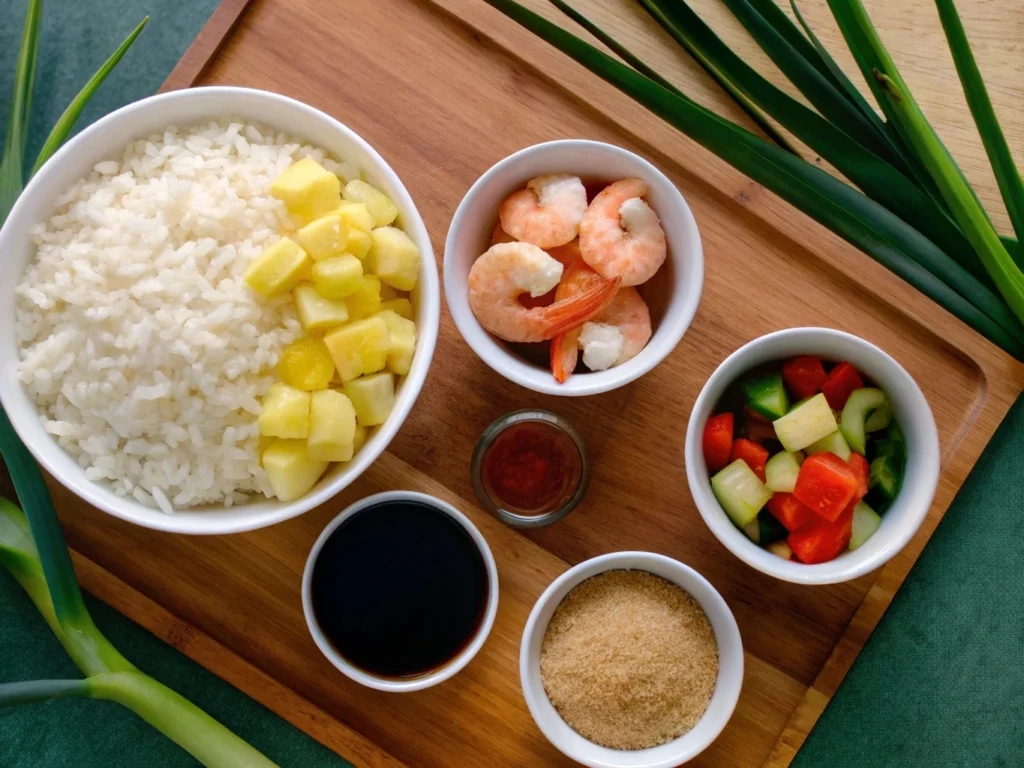
Pineapple fried rice is as much about its ingredients as it is about the way it’s cooked and presented. This section breaks down the key components, cooking steps, and tips to serve it in the most eye-catching way possible.
Key Components
Pineapple fried rice relies on a balance of sweet, savory, and aromatic ingredients to create its signature flavor. Here’s a closer look at the stars of the dish:
- Rice:
The backbone of any fried rice dish is, of course, rice. For pineapple fried rice, day-old jasmine rice is ideal. The grains are firm and slightly dry, which helps prevent clumping and ensures a perfect texture. Freshly cooked rice tends to be too sticky for stir-frying. - Pineapple:
Pineapple provides the dish with its signature sweetness. Fresh pineapple chunks are preferred for their juicy and tangy flavor, but canned pineapple can work in a pinch. The natural sugars caramelize slightly when stir-fried, adding depth to the dish. - Proteins:
Traditional Thai versions often include shrimp, but chicken, pork, or tofu are common substitutions. Shrimp pairs particularly well with the tropical notes of pineapple, while tofu makes it a great vegetarian option. - Vegetables:
A variety of vegetables can be used to add color, texture, and nutrients. Common choices include diced carrots, peas, bell peppers, and green onions. Cashews or roasted peanuts are often added for a crunchy contrast. - Seasonings:
The flavor of pineapple fried rice is built with simple yet bold seasonings. Curry powder adds a mild warmth and yellow hue, while soy sauce or fish sauce lends umami. Garlic and shallots are often sautéed as a fragrant base. - Optional Add-ins:
Raisins and cashews are common in Thai-style pineapple fried rice, providing sweetness and crunch. You might also find garnishes like chopped cilantro or lime wedges to brighten up the flavors.
Cooking Methods
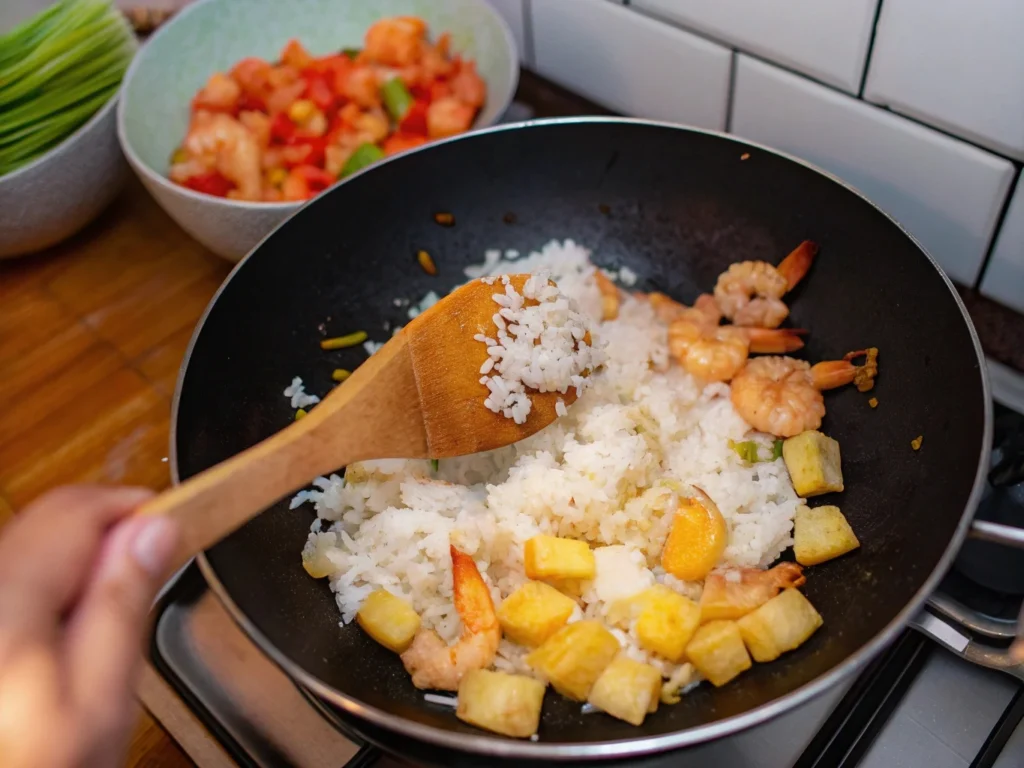
Cooking pineapple fried rice requires a few simple steps, but timing and technique are key to achieving restaurant-quality results. Here’s a step-by-step guide:
- Prepare Your Ingredients:
- Chop pineapple into bite-sized chunks and set aside.
- Dice your vegetables and protein of choice.
- Break up cold rice with your hands to loosen the grains.
- Make the Aromatic Base:
- Heat a wok or large skillet over medium-high heat. Add a bit of oil.
- Sauté minced garlic and shallots until fragrant, about 30 seconds.
- Cook the Protein:
- Add your shrimp, chicken, or tofu, and stir-fry until cooked through. Remove and set aside to prevent overcooking.
- Stir-Fry the Vegetables:
- Toss in diced carrots, peas, or bell peppers. Cook until they soften slightly.
- Add the Rice and Pineapple:
- Push the vegetables to the side and add the rice to the pan. Stir vigorously to combine, ensuring the rice gets evenly coated with oil.
- Toss in the pineapple chunks and mix.
- Season:
- Sprinkle curry powder, soy sauce, or fish sauce over the mixture. Stir until everything is well-coated and the curry powder turns the rice golden.
- Combine and Finish:
- Add the cooked protein back into the pan. Toss everything together and adjust seasoning to taste.
- Optional: Stir in raisins or roasted cashews for extra texture and flavor.
- Garnish and Serve:
- Top with fresh cilantro or green onions. Serve immediately while hot.
Nutritional Profile and Health Considerations
Pineapple fried rice is a flavorful and satisfying dish, but it’s also worth exploring its nutritional value. Whether you’re tracking calories, looking for health benefits, or trying to adapt it to a specific diet, understanding its components is key. This section breaks down the calorie content, nutrient profile, and health considerations of pineapple fried rice.
Caloric Content
The calorie content of pineapple fried rice depends on its ingredients and portion size. Here’s an overview of the main contributors:
- Base Ingredients:
- Rice: Rice is the primary source of calories in this dish. A cup of cooked jasmine rice contains about 200 calories. Using day-old rice doesn’t alter the calorie count but ensures better texture for cooking.
- Pineapple: Fresh pineapple is relatively low in calories, with about 82 calories per cup. However, canned pineapple packed in syrup can significantly increase the sugar and calorie content.
- Proteins:
- Shrimp, chicken, or tofu are common protein choices. Shrimp is low-calorie and nutrient-dense, while chicken (skinless) contains around 165 calories per 3-ounce serving. Tofu, a vegetarian option, has about 190 calories per half-cup.
- Vegetables and Add-ins:
- Vegetables like carrots, peas, and bell peppers are nutrient-rich but low in calories. However, add-ins like cashews (157 calories per ounce) and raisins (120 calories per ounce) can increase the overall calorie count.
- Oils and Seasonings:
- Cooking oils (about 120 calories per tablespoon) are another factor. While necessary for stir-frying, the type and amount of oil used can make a big difference. Soy sauce and fish sauce, though used sparingly, add sodium rather than calories.
Estimated Total:
A standard serving of pineapple fried rice (about 1.5 cups) typically contains 400–500 calories, depending on the ingredients and preparation method. Reducing oil or swapping higher-calorie add-ins can make it lighter.
Nutrient Breakdown
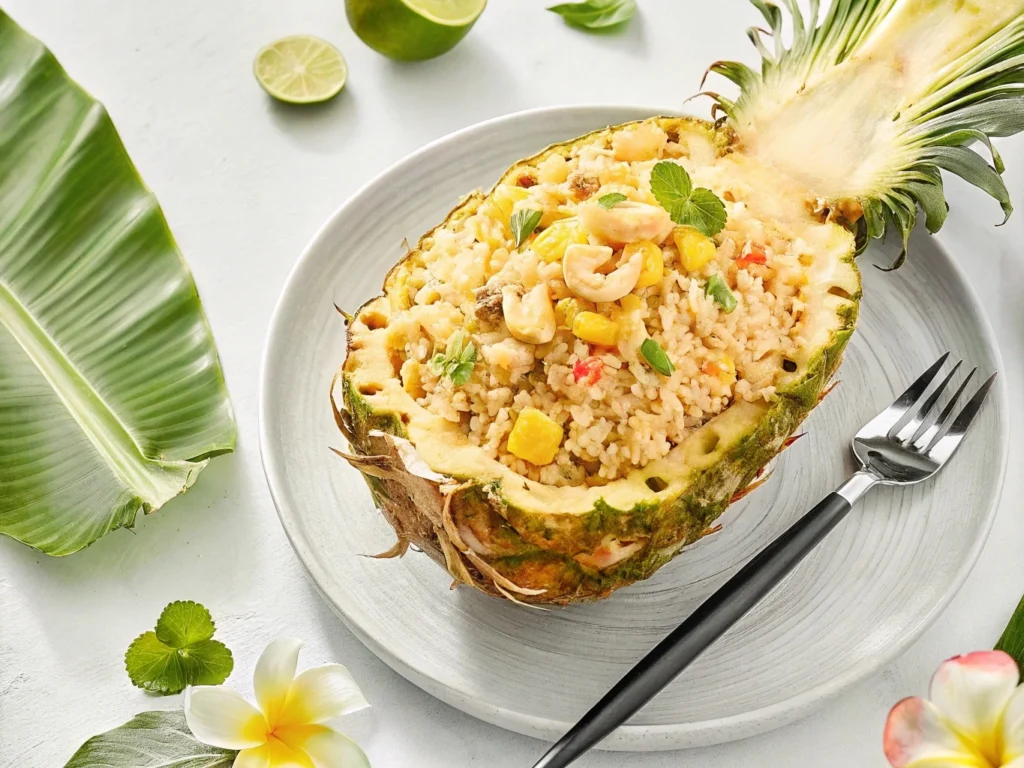
Pineapple fried rice isn’t just about calories—it offers a variety of macronutrients and vitamins. Here’s what you get in a typical serving:
- Macronutrients:
- Carbohydrates: Rice and pineapple provide the bulk of the carbohydrates, delivering quick energy. A serving contains around 50–60 grams of carbs.
- Proteins: Shrimp or chicken can contribute 10–15 grams of protein per serving, depending on portion size. Tofu is a great vegetarian source of protein, with about 10 grams per serving.
- Fats: The dish contains about 10–15 grams of fat, mostly from cooking oil and any added nuts or seeds. To reduce fat, opt for less oil or skip cashews.
- Vitamins and Minerals:
- Vitamin C: Pineapple is an excellent source of vitamin C, supporting immunity and skin health. A single serving can provide up to 70% of your daily vitamin C needs.
- Vitamin A: Vegetables like carrots and bell peppers are rich in vitamin A, which promotes eye health.
- Potassium: Both rice and pineapple contribute potassium, which helps regulate blood pressure.
- Iron and Zinc: Shrimp and chicken are good sources of these essential minerals, important for energy production and immune function.
- Fiber:
- Pineapple and vegetables add fiber to the dish, improving digestion and helping you feel full longer. A serving offers about 3–4 grams of dietary fiber.
Health Benefits and Considerations
Pineapple fried rice can be a wholesome and balanced meal, but there are a few points to consider for different dietary needs:
- Health Benefits:
- Low in Saturated Fat: When prepared with lean proteins like shrimp or chicken, the dish remains low in unhealthy fats.
- Rich in Antioxidants: Pineapple and colorful vegetables provide antioxidants that combat oxidative stress and reduce inflammation.
- Gluten-Free Option: Use tamari or coconut aminos instead of soy sauce to make it suitable for gluten-sensitive diets.
- Customizable for Specific Diets: By swapping out ingredients, this dish can fit vegetarian, pescatarian, or even keto diets (by substituting rice with cauliflower rice).
- Potential Dietary Concerns:
- High Sodium Content: Soy sauce and fish sauce are high in sodium, which could be a concern for those watching their salt intake. Opt for low-sodium versions to reduce this.
- Calorie Density: While the dish can be nutrient-rich, added oils, nuts, or sugary canned pineapple can increase its calorie density. Moderation is key.
- Allergens: Cashews, peanuts, shrimp, and soy are common allergens in this dish. Substitutions (e.g., sunflower seeds for nuts, tofu for shrimp) can make it allergy-friendly.
- Tips for a Healthier Version:
- Use fresh pineapple instead of canned to reduce added sugars.
- Replace some rice with cauliflower rice for a lower-carb alternative.
- Stick to lean proteins like shrimp or tofu and reduce the amount of oil used.
- Add extra vegetables to boost fiber and nutrients while keeping calories low.
Pineapple fried rice can be both delicious and nourishing, as long as you tailor it to your nutritional goals and dietary needs. By making a few small adjustments, you can enjoy this tropical favorite guilt-free!
Frequently Asked Questions about Pineapple Fried Rice
Pineapple fried rice is a beloved dish with its unique combination of flavors and rich cultural heritage. Here, we answer common questions about its origins, variations, and important considerations to help you better understand and enjoy this flavorful meal.
What Culture Is Pineapple Fried Rice From?
Pineapple fried rice is closely linked to Thai cuisine. In Thailand, it is called Khao Pad Sapparod and shows the Thai love for mixing sweet, savory, salty, and tangy flavors. Pineapple is used because it grows easily in Thailand’s tropical climate.
In traditional Thai culture, people often served pineapple fried rice at festive events to impress guests. Its fancy presentation in a hollowed-out pineapple added to its appeal. Although it is now a popular dish worldwide, its roots are still firmly tied to Thai cooking, which focuses on fresh ingredients and bold flavors.
How Is Thai Fried Rice Different from Chinese Fried Rice?
Though both Thai and Chinese fried rice are stir-fried dishes, they differ in flavor profiles, ingredients, and techniques:
- Flavor Profiles:
- Thai fried rice, including pineapple fried rice, uses seasonings like fish sauce, curry powder, and lime for a tangy, mildly spicy taste.
- Chinese fried rice typically relies on soy sauce, sesame oil, and oyster sauce, creating a more savory and earthy flavor.
- Ingredients:
- Thai fried rice features aromatic jasmine rice, which is more fragrant and slightly sticky compared to the long-grain rice often used in Chinese fried rice.
- Thai versions may include pineapple, shrimp, and cashews, while Chinese variations often use eggs, peas, and diced meat or seafood.
- Cooking Techniques:
- Thai fried rice often incorporates pre-cooked rice that is less sticky to allow for distinct grains.
- In Chinese cuisine, a wok is typically heated to a very high temperature for quick cooking, which imparts a smoky flavor known as “wok hei” (breath of the wok).
Both styles are delicious in their own right, but Thai fried rice, especially with pineapple, stands out for its bold and vibrant flavors.
Why Does Fried Rice Taste Better the Next Day?
If you’ve ever noticed that fried rice tastes even better as leftovers, you’re not alone—and there’s a good reason for it! This improvement happens due to:
- Flavor Development:
- The ingredients have more time to meld together, creating a deeper and more unified flavor. The sweet pineapple, savory soy sauce or fish sauce, and aromatic spices intensify as they sit.
- Texture Changes:
- Overnight refrigeration removes excess moisture from the rice, making the grains firmer and better able to absorb the flavors of the seasonings when reheated.
To fully enjoy leftover fried rice, reheat it in a hot skillet or wok with a little oil. This method revives the crispy texture while keeping the flavors intact.
Is Pineapple Fried Rice High in Calories?
Pineapple fried rice can be moderately high in calories depending on how it’s prepared. A typical serving contains 400–500 calories, but this can vary based on the ingredients:
- High-Calorie Ingredients:
- Rice and oil are the biggest contributors to calories. Add-ins like cashews or raisins also increase the calorie count.
- Using canned pineapple packed in syrup can add unnecessary sugar and calories.
- Lower-Calorie Tips:
- Use fresh pineapple instead of canned.
- Opt for brown rice or cauliflower rice for a healthier base.
- Reduce the amount of oil used for stir-frying and limit calorie-dense add-ins like nuts or dried fruit.
By making these simple adjustments, you can enjoy pineapple fried rice as a lighter meal without sacrificing its signature flavors.
What Is Fried Rice Syndrome?
“Fried Rice Syndrome” refers to food poisoning caused by the Bacillus cereus bacterium, which can grow in improperly stored cooked rice. While it sounds alarming, it’s entirely preventable with proper food handling practices.
What Causes It?
Bacillus cereus grows well in warm and damp conditions. When cooked rice stays at room temperature for too long, it becomes a place where the bacteria can multiply. These bacteria make toxins that heat cannot destroy.
How to Prevent It:
- Put cooked rice in the fridge within 1–2 hours to stop bacteria from growing.
- Reheat rice until it reaches 165°F (74°C) to kill any bacteria.
- Use leftover rice within 1–2 days for the best safety.
By following these steps, your pineapple fried rice will stay safe and tasty, even when you enjoy it as leftovers.
Now you know some fun facts and handy tips about pineapple fried rice. Whether you love its Thai roots, want to try new versions, or enjoy it the next day, this dish is always a winner!
Conclusion: A Sweet and Savory Delight
Pineapple fried rice is more than just a meal—it’s a vibrant celebration of flavor, culture, and creativity. With its perfect blend of sweet pineapple, savory seasonings, and hearty rice, it’s a dish that offers something for everyone. Whether you’re drawn to its Thai roots, intrigued by its tropical twist, or simply looking for a fun and delicious recipe to try, pineapple fried rice is endlessly versatile and highly customizable.
Furthermore, this dish isn’t just about taste; it’s an experience. From its colorful presentation in a hollowed-out pineapple to its balance of bold flavors, it’s a crowd-pleaser that can easily transform an ordinary meal into something special. Additionally, with options to make it vegetarian, gluten-free, or lower in calories, it’s simple to adapt to your preferences or dietary needs.
So, why not give pineapple fried rice a shot? Whether you’re cooking for yourself, family, or friends, it’s the kind of dish that sparks joy with every bite. Moreover, it’s easy to make and share with others, turning any gathering into a flavorful celebration. Go ahead—grab that pineapple, fire up your skillet, and savor the magic of this tropical favorite. And don’t forget to share it with others—because, honestly, a dish this good deserves to be enjoyed by all!

